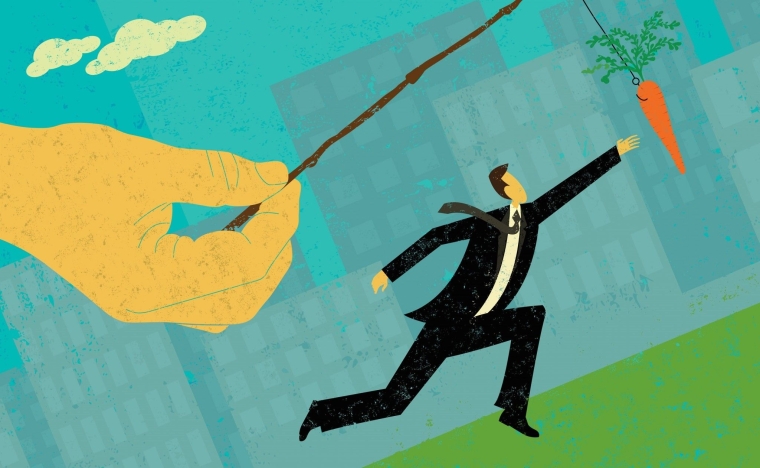
2016 was a year in which the official cash rate started the year at 2.50% and finished at the record low level of 1.75%.
That -0.75% decline however was not mirrored by bank term deposit offer rates.
In fact, as hard as it may seem to many term savers, they have been insulated from the worst of "low rates", managing to retain positive after-inflation returns.
But to escape the impact of very low rates, savers needed to commit to a term.
Pity the poor at-call savers who saw the full -0.75% reduction it their savings accounts, even their bonus savers.
But if you were prepared to commit to a term, you got off relatively less scathed.
Most household account money is at very short terms. Too much is still 'at-call' of in term deposit commitments of much less than a year.
Part of that saver impulse will be because of the need for access to funds to live on. The growing numbers of retired savers who are essentially decumulating (that is, using their capital to pay living expenses) keep a market pressure on the very short term.
During 2016, most banks flirted with 'higher' incentive rates for terms of 15 months , 18 months, 24 and even 36 months. But there is little evidence that these promotions moved saver behaviour.
At the end of 2016, it was dawning on more savers that the talk of higher rates should not be dismissed. And higher offer rates now have the look of a trap - if you think that rates will be higher again over a period less than the term commitment required by the banks.
The problem is that no-one knows where interest rates are actually going. The talk now is 'higher' but there is considerable market uncertainty and potential instability and volatility that could come from the new US administration. Besides, most savers know know that people claiming future certainty of any interest rate trends should be treated with considerable scepticism. (An that includes me.)
Remember, "you can't go broke making a profit" so financial decisions are best made with the information and perspectives you have at the time you need to make them. Second guessing the future is like gambling and not a wise move for financial decisions.
The main bank with the consistently highest one year rate in 2016 was Kiwibank. Until April BNZ had the edge, but from May on Kiwibank led the main banks and got and extra advantage by having market leading rates during November.
Westpac was the laggard for almost all the year, joined by each of the other Aussie banks for short turns at the end of the year.
Among the second tier banks, the clear winner was RaboDirect. However, things became seriously more competitive from November onward as a number of banks vied for the bragging rights for the market-leading term deposit rate.
Our analysis here is focused on the benchmark one year rate. The situation may have been different for other terms, and 'specials' became more targeted in the final quarter of the year. But the one year rate does tell a pretty consistent story.
You can find all current term deposit rates here and here.
Today, TSB Bank's 3.75% 9 month 'special' looks particularly attractive, as does Heartland Bank's 3.70% for the same term. (Ditto ICBC.)
For terms longer than one year, rates over 4% are starting to reappear. Even the main banks like ANZ and ASB offer them for 4 years and longer. TSB Bank and SBS Bank offer them for three years and longer. We doubt that many are attracted to term commitments this long, but things will get interesting if they started showing up in 2017 for terms 2 years and less.
Term deposit savers have had to put up with sub 4% rates for over 18 months now. Perhaps the cycle is turning. But don't count on it for terms of 1 year soon. In June 2015, the one year swap rate was 3.10% and falling. Today it is just 2.20%, a level it has been broadly at for six months and it doesn't look like if is on the move yet (unlike longer terms rates). Wholesale rates will give the best early indication that retail rates may be about to move.
Here is a picture of what one selected TD term did in 2016:
In terms of overall rate competitiveness, here is how these banks positioned themselves on average over all of 2016, and at the end of the year.
| relative price competitiveness | 2016 average | year-end | |
| one year term deposit only | rate % | rate % | |
| #11 | HSBC | 2.92 | 2.90 |
| #10 | ASB | 3.25 | 3.20 |
| #9 | TSB Bank | 3.27 | 3.50 |
| #8 | Westpac | 3.28 | 3.40 |
| #7 | BNZ | 3.31 | 3.25 |
| #6 | ANZ | 3.33 | 3.35 |
| #5 | Co-operative Bank | 3.36 | 3.60 |
| #4 | SBS Bank | 3.36 | 3.60 |
| #3 | Kiwibank | 3.37 | 3.35 |
| #2 | Heartland Bank | 3.43 | 3.40 |
| #1 | RaboDirect | 3.45 | 3.40 |


We welcome your comments below. If you are not already registered, please register to comment.
Remember we welcome robust, respectful and insightful debate. We don't welcome abusive or defamatory comments and will de-register those repeatedly making such comments. Our current comment policy is here.